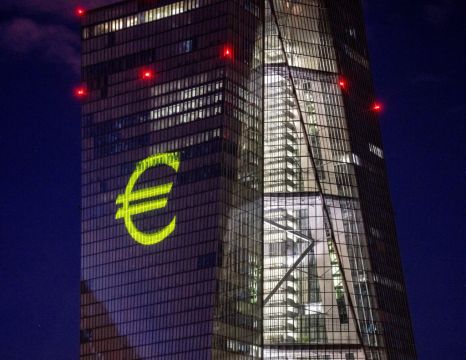The European Central Bank is celebrating the 20th anniversary of the euro as member countries wrestle with the pandemic’s impact on the economy and the European Union forges a new level of financial co-operation to help boost the recovery.
The event was marked at midnight with a light display in blue and yellow, the colours of the EU, projected on its skyscraper headquarters in Frankfurt, Germany.
The introduction of notes and coins in 12 countries on January 1 2002 was a massive logistical undertaking that followed the introduction of the euro for accounting purposes and electronic payments three years earlier.

Today, the euro is used in 19 of the 27 EU countries.
The cash introduction saw new euro notes and coins quickly replace German marks, French francs and Italian lire in ATMs, cash registers and wallets and purses.
Shop customers who paid in the old currencies received change in euros under fixed exchange rates. That swept the old currencies out of circulation as people spent their remaining national cash.
Warnings of a logistical catastrophe did not come to pass.
ECB president Christine Lagarde – in 2002 a lawyer with a global law firm – recalled withdrawing her first euros from a cash machine near her home in Normandy with friends who predicted the switch would overload the machines.
I remember when I first held a euro banknote just after midnight 20 years ago.
That moment was a tiny part of the largest cash changeover ever. For many it is now impossible to imagine Europe without the euro.
In #TheECBBlog I reflect on the euro’s journeyhttps://t.co/ROESHDAyJx pic.twitter.com/1znlPTAmmU— Christine Lagarde (@Lagarde) December 31, 2021
“We made a bet: if the machine gave us French francs instead of euro notes, they could keep the money,” she wrote on the ECB’s website.
“After midnight, we tried the cash machine. It dispensed brand new, crisp euro banknotes, and we all raised a glass to the new European currency.”
The bank plans to redesign the banknotes, with a final decision on the new look expected in 2024.
The original designs with generic windows, doorways and bridges from various eras that do not represent any specific place or monument have undergone one relatively minor update since introduction.
The bank is also studying a possible digital version of the currency.







